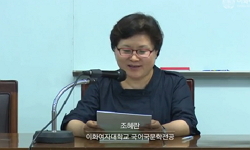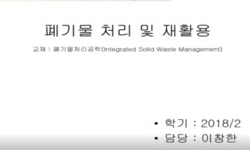This paper examined the process and features of institutionalization in Daesong in the way of litigation of women in the Chosun Dynasty. Women in the early Chosun Dynasty had no distinction between participation in litigation and Daesong, but since th...
http://chineseinput.net/에서 pinyin(병음)방식으로 중국어를 변환할 수 있습니다.
변환된 중국어를 복사하여 사용하시면 됩니다.
- 中文 을 입력하시려면 zhongwen을 입력하시고 space를누르시면됩니다.
- 北京 을 입력하시려면 beijing을 입력하시고 space를 누르시면 됩니다.

조선전기 사족부녀 대송(代訟)의 성격과 소송 양상 = The characteristics and litigation of Daesong(代訟) by women of Yangban class in the Chosun Dynasty
한글로보기https://www.riss.kr/link?id=A106927423
-
저자
한효정 (재단법인 산기)

- 발행기관
- 학술지명
- 권호사항
-
발행연도
2020
-
작성언어
Korean
-
주제어
women of Yangban class ; Litigation ; Daesong(代訟) ; Property rights ; Housewife ; Widow ; Kyosong-iban(決訟立案) ; 대송 ; 결송입안 ; 과부 ; 양반 여성 ; 재산권 ; 처 ; 가부장제
-
등재정보
KCI등재
-
자료형태
학술저널
-
수록면
329-362(34쪽)
-
KCI 피인용횟수
0
- 제공처
-
0
상세조회 -
0
다운로드
부가정보
다국어 초록 (Multilingual Abstract)
This paper examined the process and features of institutionalization in Daesong in the way of litigation of women in the Chosun Dynasty. Women in the early Chosun Dynasty had no distinction between participation in litigation and Daesong, but since the 16th century, participation in litigation gradually decreased and Daesong expanded. In the Chosun Dynasty, the litigation system was based on the participation of the parties, but the provision of Daesong of women of yangban class started from the regulations restricting the lawsuit parties from entering the court. The direction of the criminal prosecution regulations for these women of yangban class influenced Sasong (詞訟), thereby regulating the participation of women of yangban class. As an alternative, Daesong was allowed, and the rules of the Kyungkuk-dajeon(經國大典) were introduced. The criminal prosecution of women of yangban class and the provisions of Daesong were deeply related to the strengthening of the order of Confucian ethics since the time of King Sejong. At that time, the monogamous system was regarded as an ideal system and the policy was established. As the separation of space between men and women was emphasized and legislated by virtue of practical ethics, a rule was created to prohibit women of yangban class from entering the court and limit face-to-face psychology. As an alternative, the Daesong rule appeared. In the end, Daesong had a strong purpose to preserve chastity of women of yangban class, and has a preferential personality allowed for this. However, when analyzing the actual case of a lawsuit, the wife was a litigant in the dispute over her deceased husband's property and the power of the litigant took precedence over her son. This fact means that women in her husband's property have authority over the husband's property and the right of the litigant party when a legal dispute arises, and shows the authority and status of the wife's family system. In other words, the authority and status of the wife were systematically protected in the management of families during the Chosun Dynasty. Measures restricting women in aristocratic elites' participation in lawsuits have caused women to avoid court entry. As a result, the lawsuit ability of women of yangban class was restricted, which increased the possibility of problems in the management and maintenance of husband's property. The policy to allow Daesong of women of yangban class was analyzed to take into account the supplementation of women in aristocratic elites's contracted litigation ability and protection of authority over husband's property. Thus Daesong(代訟) shows the regulatory aspects of the social activities of women of yangban class, while at the same time officially recognizing and guaranteeing the role and status of the wife in the family system. This is considered to be a cross-section of the Confucian patriarchal system of the Chosun Dynasty, which valued and guaranteed women's economic rights and family management.
국문 초록 (Abstract)
이 논문은 조선전기 사족 여성의 소송 방식이 대송으로 제도화되는 과정과 특징을 고찰한 글이다. 조선시대 소송제도는 당사자가 직접 참여하는친송(親訟)이 원칙이었으나 사족부녀에게는 ...
이 논문은 조선전기 사족 여성의 소송 방식이 대송으로 제도화되는 과정과 특징을 고찰한 글이다. 조선시대 소송제도는 당사자가 직접 참여하는친송(親訟)이 원칙이었으나 사족부녀에게는 대송을 허용하였다. 사족부녀의 대송 규정은『경국대전』에 실렸는데, 이 규정은 세종대 이후 유교적윤리질서 강화와 깊이 관련되었다. 즉, 일부일처제 정책의 하나로 사족여성의 출입 규제가 법제화됨에 따라 송정(訟庭) 출입과 대면심리를 제한하는조치가 시행되었고, 그 대안으로 대송을 허용한 것이었다. 결국 대송은 송정출입에 따른 사족여성의 실절(失節)을 방지하기 위한 목적이 강하며, 이에따라 허용된 특례 성격을 띠었다. 한편, 사족여성의 친송 제약은 사족여성의소송 능력 위축으로 이어져 과부의 재산 관리와 유지에 문제가 발생할 가능성이 컸다. 실제 사족여성의 소송사례를 분석한 결과, 과부가 된 처가 부계(夫系) 재산을 대상으로 소송한 사례가 대부분이며, 소송 결과 처에게 향후상속권자인 아들보다 우선하는 법적 권한을 부여해주었다. 즉, 사족여성의 대송 허용에는 사족여성의 친송 규제로 위축된 소송의 보완과 과부의 재산권 보호를 위한 측면이 고려된 것으로 분석된다. 따라서 대송은 사족여성의사회 활동을 규제하는 동시에 처의 경제적 지위를 공식적으로 보호한 양면성이 있는 제도였다고 할 수 있다.
참고문헌 (Reference)
1 박병호, "한국법제사고" 법문사 1974
2 이순구, "조선초기 종법의 수용과 여성지위의 변화" 韓國精神文化硏究院 韓國學大學院 1995
3 유기준, "조선초기 속형(贖刑)에 대하여" 호서사학회 19·20합 : 1992
4 이숙인, "조선중기 사회의 여성인식 : 정절 개념을 중심으로" 규장각한국학연구원 (46) : 23-51, 2009
5 김성우, "조선중기 국가와 사족" 역사와 비평사 2001
6 한효정, "조선전기 代訟制度의 변화" 조선시대사학회 (90) : 7-39, 2019
7 "조선왕조실록"
8 "조선시대 결송입안집성"
9 김경숙, "조선시대 결송입안과 여성의 소송 주체성" 서울대학교 국사학과 65 : 2018
10 한효정, "조선시대 代訟의 양상과 특징 -16세기~19세기 決訟立案을 중심으로-" 한국고문서학회 54 : 149-167, 2019
1 박병호, "한국법제사고" 법문사 1974
2 이순구, "조선초기 종법의 수용과 여성지위의 변화" 韓國精神文化硏究院 韓國學大學院 1995
3 유기준, "조선초기 속형(贖刑)에 대하여" 호서사학회 19·20합 : 1992
4 이숙인, "조선중기 사회의 여성인식 : 정절 개념을 중심으로" 규장각한국학연구원 (46) : 23-51, 2009
5 김성우, "조선중기 국가와 사족" 역사와 비평사 2001
6 한효정, "조선전기 代訟制度의 변화" 조선시대사학회 (90) : 7-39, 2019
7 "조선왕조실록"
8 "조선시대 결송입안집성"
9 김경숙, "조선시대 결송입안과 여성의 소송 주체성" 서울대학교 국사학과 65 : 2018
10 한효정, "조선시대 代訟의 양상과 특징 -16세기~19세기 決訟立案을 중심으로-" 한국고문서학회 54 : 149-167, 2019
11 조윤선, "조선 후기 소송 연구" 국학자료원 2002
12 박용옥, "조선 태종조 처첩분변고(妻妾分辨考)" 한국사연구회 14 : 1976
13 마르티나 도이힐러, "유교에 기초한 입법화와 이것이 여성의 지위에 미친 결과" 부산경남사학회 (44) : 159-212, 2002
14 정동윤, "민사소송법" 법문사 2010
15 박병호, "근세의 법과 법사상" 진원 1996
16 "경국대전"
17 한효정, "16세기 한 양반가 부인의 재산축적과 소유의식 -慶州孫氏家門 和順崔氏를 중심으로-" 한국고문서학회 36 : 97-120, 2010
동일학술지(권/호) 다른 논문
-
식민주의와 가부장제의 공존, 부끄러움은 누구의 몫인가 (김귀옥, 『그곳에 한국군 ‘위안부’가 있었다』, 선인, 2019)
- 한국여성사학회
- 허윤
- 2020
- KCI등재
-
내 책을 말한다 (염운옥, 『낙인찍힌 몸: 흑인부터 난민까지, 인종화된 몸의 역사』, 돌베개, 2019)
- 한국여성사학회
- 염운옥
- 2020
- KCI등재
-
미국 신남부 흑인린치와 백인여성의 저항 : 남부여성린치방지협회(1930∼1942)를 중심으로
- 한국여성사학회
- 김인선
- 2020
- KCI등재
-
차이창(蔡暢)의 부녀해방 사상에 대한 일고찰 - 국가건설기(1940년대∼50년대)를 중심으로
- 한국여성사학회
- 이선이
- 2020
- KCI등재
분석정보
인용정보 인용지수 설명보기
학술지 이력
| 연월일 | 이력구분 | 이력상세 | 등재구분 |
|---|---|---|---|
| 2026 | 평가예정 | 재인증평가 신청대상 (재인증) | |
| 2020-01-01 | 평가 | 등재학술지 유지 (재인증) |  |
| 2017-01-01 | 평가 | 등재학술지 선정 (계속평가) |  |
| 2016-01-01 | 평가 | 등재후보학술지 유지 (계속평가) |  |
| 2015-01-01 | 평가 | 등재후보학술지 유지 (계속평가) |  |
| 2013-01-01 | 평가 | 등재후보 1차 FAIL (등재후보1차) |  |
| 2012-01-01 | 평가 | 등재후보 1차 PASS (등재후보1차) |  |
| 2011-01-01 | 평가 | 등재후보학술지 유지 (등재후보1차) |  |
| 2010-01-01 | 평가 | 등재후보학술지 유지 (등재후보2차) |  |
| 2009-01-01 | 평가 | 등재후보 1차 PASS (등재후보1차) |  |
| 2007-01-01 | 평가 | 등재후보학술지 선정 (신규평가) |  |
학술지 인용정보
| 기준연도 | WOS-KCI 통합IF(2년) | KCIF(2년) | KCIF(3년) |
|---|---|---|---|
| 2016 | 0.5 | 0.5 | 0.53 |
| KCIF(4년) | KCIF(5년) | 중심성지수(3년) | 즉시성지수 |
| 0.59 | 0.56 | 1.524 | 0 |




 KCI
KCI KISS
KISS






